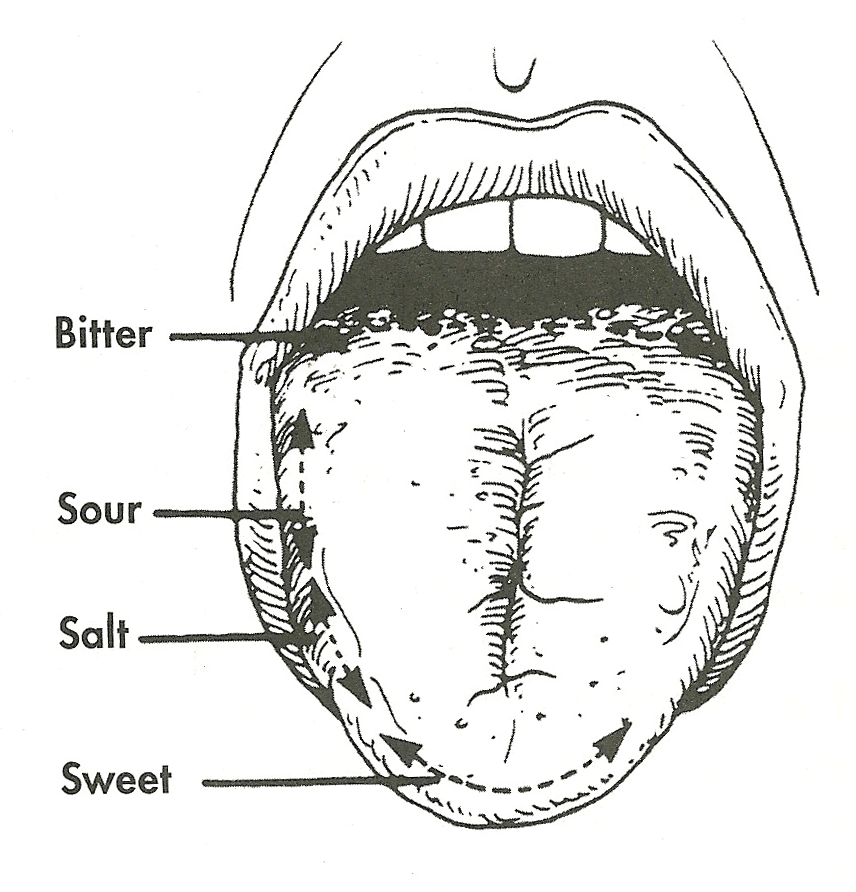The Four Basic Tastes
Gustation is the taste sense whose receptors lie in the mucous membrane covering the tongue and whose stimuli consist of soluble chemical compounds. As a general rule, the tongue can detect four basic tastes.
Sweet
Characterized by solutions of sugars, alcohols, lycols and some acids. Sweet is perceived primarily by the fungiform papillae at the tip of the tongue.
Salt
Characterized by solutions of chlorides, bromides, iodides, nitrates and sulfates. Salt is perceived by the fungiform and foliate papillae on the anterior sides of the tongue.
Sour
Characterized by solutions of tartaric, citric and malic acids. Sour is perceived by the foliate and fungiform papillae on the posterior sides of the tongue.
Bitter
Characterized by solutions of quinine, caffeine and other alkaloids. Bitter is perceived by the circumvallate papillae at the back of the tongue.

The water soluble chemical compounds in coffee can be grouped according to the taste sensation they create.
| Taste Sensation | Chemical Compound | Solubles % | |
| Sweet | Carbohydrates | Caramelized Sugars | 35.0 |
| Proteins | Amino Acid Complexes | 4.0 | |
| Salt | Mineral Oxides | Potassium Oxide | 8.4 |
| Phosphoris Oxide | 2.1 | ||
| Calcium Oxide | 2.1 | ||
| Magnesium Oxide | 0.5 | ||
| Sodium Oxide | 0.5 | ||
| Other Oxides | 0.4 | ||
| Sour | Nonvolatile Acids | Caffeic Acid | 1.4 |
| Citric Acid | 1.0 | ||
| Malic Acid | 1.0 | ||
| Tartaric Acid | 1.0 | ||
| Bitter | Alkaloids | Caffeine | 3.5 |
| Trigonelline | 3.5 | ||
| Nonvolatile Acids | Quinic Acid | 1.4 | |
| Esters | Chlorogenic Acid | 13.0 | |
| Phenols | Phenolic Complexes | 5.0 |
The coffee taste sensation combines all four of these basic tastes. Three of them – sweet, salt and sour – tend to dominate the overall taste sensation. This is primarily because the compounds that create them are present in the greatest quantities. Although bitter is commonly used to describe poor coffee tastes, coffee’s bitterness is a taste sensation unique to coffee, similar to the effects of tannins in red wine or hops in beer. Using bitter as a solely negative attribute is technically incorrect.
